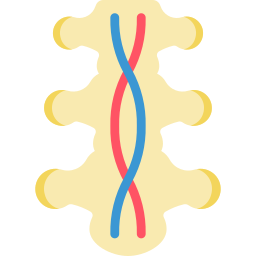![]() Spinal Angiography
Spinal Angiography
Spinal Angiography is a catheterization to study vascular anatomy and diagnose spinal cord blood vessel abnormalities. It is the “gold standard” test for the study of vascular diseases of the spinal cord (aneurysms, arteriovenous malformations, dural fistulas, etc).
The main indications for the procedure are the suspicion or diagnosis of:
- Medullary arteriovenous fistulas or medullary arteriovenous malformations – vascular alteration that leads to abnormal communication between the medullary veins and arteries;
- Hemorrhages (bleeding) in the spinal cord;
- Tumors that are hypervascular or that invade blood vessels in the spinal cord or spine.
- The patient must fast for 6-8 hours before the exam;
- Have recent laboratory tests and previous imaging;
- The presence of a companion is recommended;
- Communicate allergies and medications that you use routinely;
- Answer the angiography investigation questionnaire;
- Groin trichotomy should only be performed from 30 minutes to 2 hours before the exam;
- Cannot be tested in the presence of any infection;
- Patients with renal failure or with a single kidney need special and specific care for each case;
- All patients should have routine laboratory testing prior to the examination to assess liver, kidney, and hematologic/coagulogram function.
- History of allergy to medications and/or foods must be reported;
- Report all personal morbid history.
- Rest of approximately 6 hours, in the same hospital where the angiography was performed;
- Avoid walking and standing or sitting for a long time in the first 48 hours after the exam;
- The dressing can be removed at home, the day after the exam, preferably under the shower with running hot water;
- It is not allowed to drive for 1 week and do physical activity with the legs for 2 weeks.
How is Spinal Angiography performed?
To perform the exam, a local anesthesia is applied in the region where the catheter will be introduced (groin region). The doctor will direct the catheter (a small tube) from the insertion site into the blood vessels that supply the spinal cord.
After that, with the injection of contrast through the catheter, it is possible to evaluate the entire anatomy of the spinal cord blood vessels and define the best treatment for the patient. The exam is performed under general anesthesia for patient comfort.
How to prepare for the exam?
To perform the exam it is important to fast for about 8 hours due to general anesthesia.
In addition, in some cases it is necessary to stop taking some medications from 1 to 5 before the procedure, such as anticoagulants and some medications for the treatment of diabetes (eg metformin) and, therefore, it is very important to inform the doctor about the medications that if you are taking.
Is Spinal Angiography a dangerous exam?
It is a safe and common test in the practice of the endovascular neurosurgeon or interventional neuroradiologist. The complication rate in the medical literature is less than 1%.
The most common risk of the test is an allergic reaction to the contrast, which is unlikely to occur if the patient has no history of allergy. Also, the doctor usually has medication ready in case this happens.
Bleeding at the catheter insertion site or kidney problems due to contrast may also occur, which is rare in patients with no previous history of kidney disease.
What diagnoses can be made or confirmed by Spinal Angiography?
Conditions diagnosed or confirmed by spinal angiography include spinal arteriovenous malformations, arteriovenous fistulas, and hypervascularized tumors of the spinal cord or spine.
Do I need to fast?
The patient should fast from solid foods for 8 hours and liquids for 6 hours.







